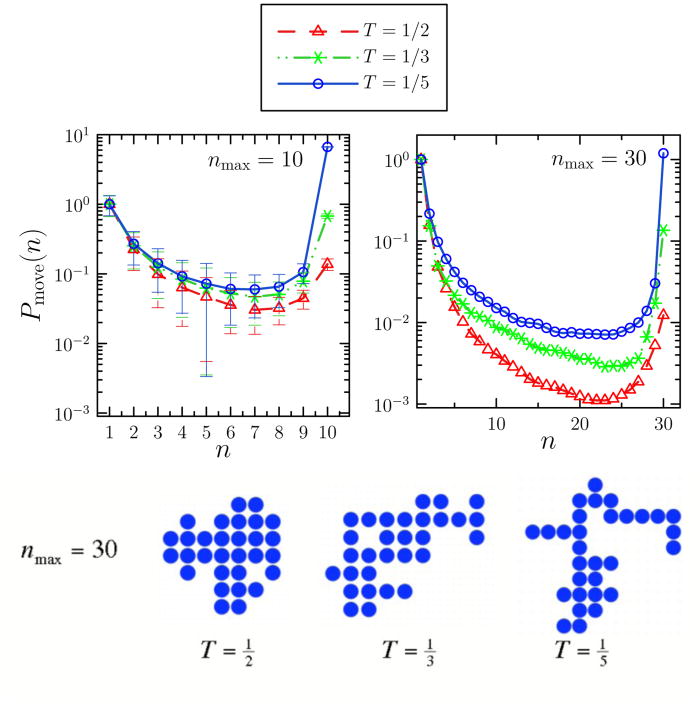FIG. 5.
Top row: Kinetic behavior of individual clusters within the 2d attractive lattice gas at different T. Starting from disordered configurations at concentration φ0 = 0.1 we evolve each system according to virtual-move Monte Carlo dynamics with D(n) ∝ n−1. We ‘capture’ clusters of size nmax = 10 or 30 as they develop, and subject these clusters repeatedly to the same collective-move Monte Carlo procedure, recording (but not making) accepted moves. We plot the probability of the concerted motion of a sub-cluster of size 1 ≤ n ≤ nmax, Pmove(n), normalizing data by setting Pmove(1) = 1. At the highest temperature the probability of monomer unbinding, Pmove(1), is rapid relative to that of whole-cluster motion, Pmove(nmax), allowing assembled structures to relax as they grow. Note however that correlated motions contribute measurably to relaxation dynamics even at high temperature. At lower temperatures, collective motion of the whole cluster predominates. Bottom row: typical 30-member clusters obtained at the three temperatures considered.

